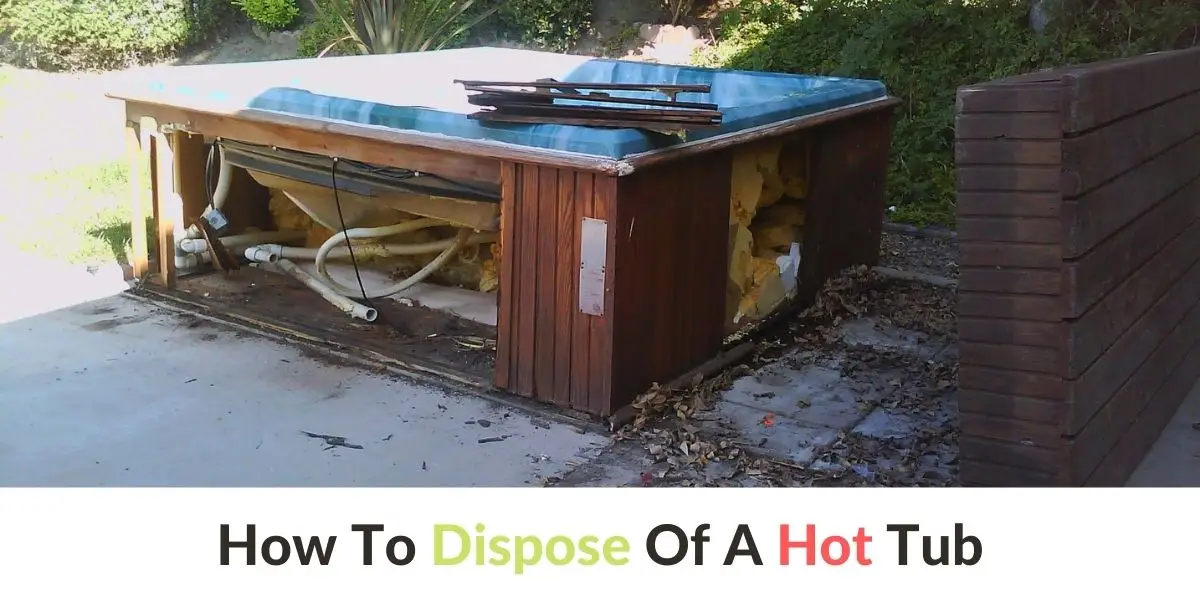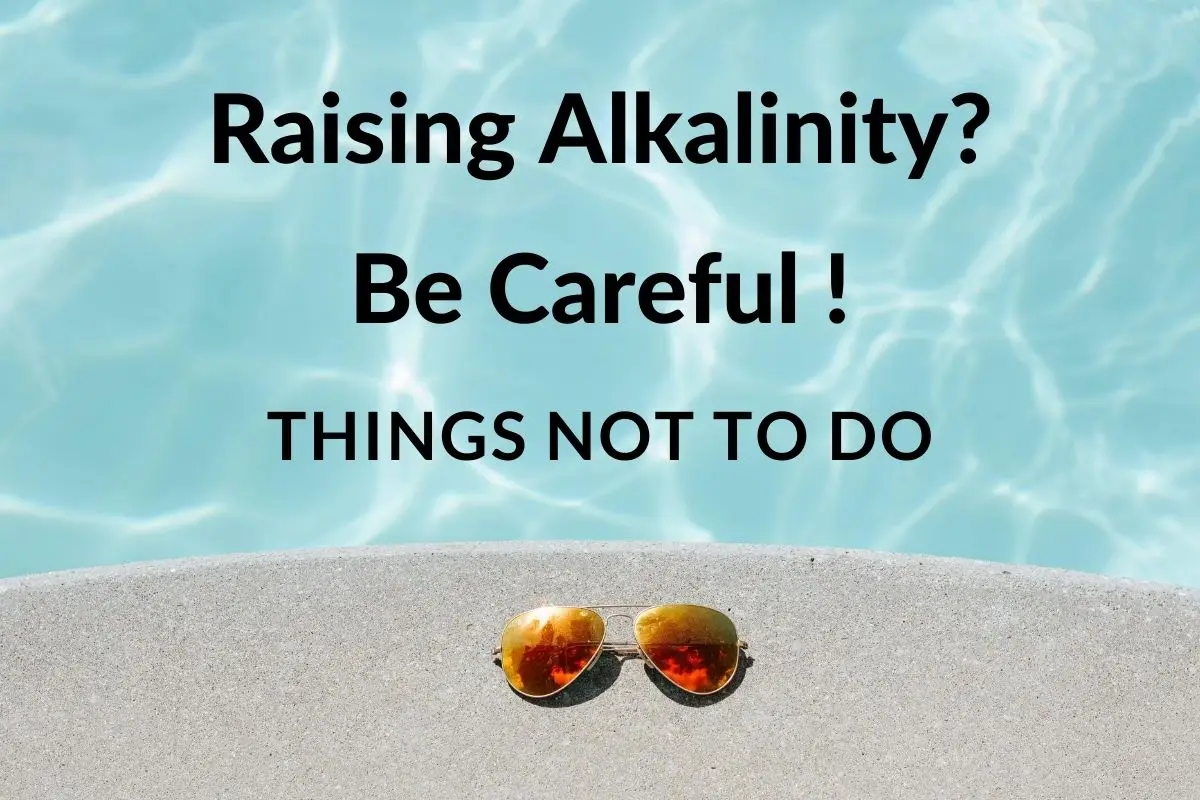Are Inflatable Hot Tubs Dangerous? [Watch Out For This]
Inflatable hot tubs are generally safe to use, but like any water-filled recreational equipment, there are potential safety hazards. It’s important to follow the manufacturer’s instructions for setup, maintenance, and use, as well as the guidelines for water chemistry to minimize the risk of accidents or injuries. Some common safety precautions include:
- Keeping the hot tub away from electrical sources and other hazardous areas
- Making sure the hot tub is level and stable on a flat surface
- Avoiding sharp objects or rough play that can puncture the hot tub
- Not overloading the hot tub with too many people
- Not letting children or pets use the hot tub without adult supervision
- Maintaining appropriate water chemistry levels to avoid skin irritation or infections
- Avoiding prolonged exposure to hot water, as it can cause overheating
- Getting out of the hot tub slowly and carefully to avoid slipping and falling
- Monitoring the temperature regularly to avoid overheating and scalding
By taking these precautions, you can help ensure that your inflatable hot tub experience is safe and enjoyable.
What are the Safety Features Included with Inflatable Hot Tubs?
Some common safety features included with inflatable hot tubs are:
- Non-slip surfaces – to prevent slipping and falling when getting in and out of the hot tub.
- Ground fault circuit interrupter (GFCI) – to prevent electrical shock.
- Cover with safety clips – to prevent children and pets from accessing the hot tub when not in use.
- Temperature controls – to prevent overheating and scalding.
- Overflow drain – to prevent water from overflowing and causing damage.
- Proper water treatment and sanitation – to prevent the growth of bacteria, viruses, and other harmful organisms.
- Proper ventilation – to prevent the buildup of harmful chemicals and gases.
- Proper electrical wiring – to prevent electrical hazards and ensure safe operation of the hot tub.
It’s important to keep these safety features in mind when choosing and using an inflatable hot tub, and to follow the manufacturer’s instructions and guidelines for safe operation and maintenance.
Can Inflatable Hot Tubs Withstand Harsh Weather Conditions?
The durability and ability of inflatable hot tubs to withstand harsh weather conditions varies depending on the brand and model. Some inflatable hot tubs are made with high-quality materials and are built to withstand exposure to elements such as wind, rain, and snow. However, it’s important to always follow the manufacturer’s guidelines for proper storage and maintenance to ensure your hot tub remains safe and secure during harsh weather conditions. In general, it’s recommended to drain and store the hot tub when not in use, especially during extreme weather conditions.
Are There Any Risks Associated with the Electrical Components of Inflatable Hot Tubs?
Yes, there are risks associated with the electrical components of inflatable hot tubs. Since inflatable hot tubs need to be filled with water, there is a risk of electrical shock if the electrical components are not properly protected from the water.
Additionally, if the electrical components are not designed to meet safety standards or are poorly maintained, they may pose a fire hazard. Therefore, it is important to choose an inflatable hot tub with reliable electrical components and to maintain those components properly to minimize the risk of electrical hazards.
What are the Safety Guidelines for Using Inflatable Hot Tubs, Particularly with Children and Pets?
When using an inflatable hot tub, it is important to follow the following safety guidelines, especially with children and pets:
- Supervision: Children and pets should always be supervised while near or in the hot tub.
- Age restriction: Children under the age of 5 should not use hot tubs.
- Water temperature: The water temperature should not exceed 104°F (40°C) to prevent burns or overheating.
- Drain covers: Ensure the drain covers are securely in place to prevent entrapment.
- Chemical balance: Keep the hot tub’s pH, chlorine, and sanitizer levels balanced to reduce the risk of skin irritation or chemical burns.
- Ladders and steps: Use ladders or steps to get in and out of the hot tub safely, especially for young children and pets.
- Electrical safety: Check the electrical components and wiring before each use to ensure they are in good condition and free from damage.
- Use approved electrical devices: Only use electrical devices specifically designed for hot tub use, and avoid using any electrical devices near the water.
- Keep the hot tub area clear: Avoid using the hot tub if there are any tripping hazards or sharp objects nearby.
By following these safety guidelines, you can help ensure that your hot tub experience is safe and enjoyable for everyone.
How Durable are Inflatable Hot Tubs, and what Kind of Maintenance is Required to Keep them Safe for Use?
Inflatable hot tubs are generally made from durable materials, such as vinyl or PVC, which can withstand the weight of water and people. However, the durability of an inflatable hot tub will depend on its quality and the frequency and manner of use.
To maintain the safety and longevity of an inflatable hot tub, it is important to follow the manufacturer’s guidelines for set-up, maintenance, and storage. This may include cleaning the hot tub regularly, checking the water level and temperature, and ensuring that the electrical components are functioning properly.
In addition, it is important to follow any safety guidelines, such as ensuring that the hot tub is level and stable, avoiding overfilling or puncturing the hot tub, and using the appropriate chemicals to maintain water quality. By taking proper care of an inflatable hot tub, it can last for many seasons and provide a safe and enjoyable experience for all users.
Can you Get Electrocuted in a Lazy Spa?
Yes, just like regular hot tubs, it is possible to get electrocuted in a lazy spa as well, although these cases are fairly rare.
Usually, lazy spas are not hard-wired, but have a direct line (electrical cord) to the outlet. It is important not to use any extension cords when plugging in your lazy spa and make sure the outlet that is being used is safely grounded. Grounding the outlet prevents any possible power surges which may overload the socket and the electrical system. The electrical cord that is being used to connect the lazy spa to the outlet needs to be in perfect condition as well. These steps will ensure that any danger of possible electrocution is brought down to a minimum.
Other common reasons for electrocution can be due to faulty wiring of underwater lighting or heating systems. These are precisely the reasons one must be very cautious and perform regular checks of the electric wiring of the hot tub, no matter what type it is.
Keeping out of the lazy spa during a thunderstorm is also an important safety aspect and plugging off all electricity to it completely.
Lazy spa is a fun and interesting time for relaxation and enjoyment, but like any type of hot tub, it needs the necessary maintenance and interest from the owner to keep it safe and not neglecting any safety features.
Can a Hot Tub Cause Cancer?
Recent studies have linked chlorine and some byproducts in hot tub water with an increased chance of danger to the sensitivity of the skin, making it more sensitive and susceptible to carcinogens.
Carcinogens are substances that are known to cause cancer directly, or increase the risk of getting cancer. The question of whether hot tubs can cause cancer is not one with a straight-forward answer, but it requires detailed clarification. Chlorine, the chemical used in hot tubs as a sanitizer and its byproducts is safe within its recommended ratio, but this ratio needs to be maintained at all times, so no byproducts of chlorine are created and become part of the hot tub water and preventing chlorine to reach low levels, allowing bacterial growth is just as damaging.
Recent hot tub manufacturers and related products manufacturers are focusing more and more on a substitute chemical – bromine, that is not as strong as chlorine and safer to use.
Additionally, it is important to remember that people who already have this life-threatening condition should be careful as well. Chemotherapy and radiation can cause strong skin sensitivity that reacts to chemicals like chlorine. Hot tubs, saunas and other communal baths are generally not recommended for immunosuppressed patients because bacteria and other microorganisms thrive in warm water.
Is it OK to Go in a Hot Tub Every Day?
Going into a hot tub every day poses no threat and cannot cause any health hazards, as long as it is done responsibly and the best way to do so is to establish a routine that will bring long lasting effects of relaxation, stress relief and better sleeping habits.
Daily bading in the hot tub can also cause relief from pain in case the hot tub owner is suffering from any injuries and relaxes the muscles. In fact, multiple surveys performed by hot tub sellers and manufacturers show that owners of a hot tub found themselves using the pleasure of their hot tub more often than they expected to, so using it on a daily basis is not an uncommon practice. Often hot tub baths also decrease the pain from chronic illnesses and provide much-needed relaxation from stress and tension for professional athletes.
Using a hot tub every day requires some effort from the hot tub owner, naturally. Diligent monitoring and cautionary checks are required more frequently, as is the care for hot tub water. Of course, many consider this a small price to pay for the benefits a daily hot tub relaxation provides them.
Can you Fall Asleep and Drown in a Hot Tub?
Although this scenario is theoretically possible, it is highly unlikely. Most hot tubs are simply too shallow for a person to slip down under the water so it covers all his breathing organs.
However, even if this happened to be the case, the very effect of being underwater would wake the hot tub user and he would have no trouble sitting or standing up and avoid suffocation.
Some of the possible effects such an occurrence may cause is feeling a sensation of dizzy or feeling mild nausea due to the fact that the body has been submerged too long under the warm hot tub water.
The very idea of falling asleep and drowning in the hot tub is derived from the fact that sense of relaxation of muscles and the comfortable feeling of wellness and enjoyment, that can cause a person to daze off a bit.
However, this can be used to the owner‘s advantage. By taking a bath in the hot tub some 2 hours before going into bed, the body temperature will increase during the time spent in a hot tub, then greatly reduce, causing reduced brain activity and allowing the body to relax and fall asleep easier.
One of the risks of dazing off in the hot tub is precisely the warm water, which can cause the hot tub owner or user‘s body to overheat if staying too long.
Can you die from being in the hot tub too long?
Sitting in hot water in the hot tub for too long can be the cause of severe heat-related illnesses, such as nausea, dizziness or fainting, and (in extremely rare cases) even death.
In case the hot owner or user is feeling these symptoms (nausea, dizziness, light-headed sensation), it usually means that spending too much time in the hot tub water has increased his body temperature too much, which can be dangerous. Once the person is out of the hot tub, in case of cold weather, it can quickly have an opposite effect, decreasing the body‘s temperature to the point of hypothermia.
Another issue caused by staying too long in the hot tub can be changes in the blood flow to the brain, that cause the above-mentioned symptoms of dizziness and nausea.
The most dangerous types of spas actually are whirlpool spas – jacuzzi, that according to scientists, presents an ideal breeding ground for all kinds of bacteria and microorganisms. One of them causes legionnaire‘s disease, which can be fatal in some cases.
Preventing such health issues implies maintaining your hot tub responsibly, showering before getting into it and monitoring the water temperature and chemical state.
It should be mentioned that these health issues are relatively uncommon and that most hot tub owners are aware of these risks and avoid them.
How Many People Drown in a Hot Tub Each Year?
According to the Consumer Product Safety Commission, one of the main authorities on this subject, on average 60 drownings related to hot tubs are recorded each year.
Although it is not a number that can be discarded so easily, one should keep in mind that a great deal of these deaths is related to lack of caution and proper maintenance of their hot tubs.
The main reason for this amount of hot tub-related deaths is extremely hot water, which implies lack of proper and regular checks of hot tub water temperature. The other big reason for death related to hot tub usage is intoxication, either by drugs or alcohol, that prevents the hot tub user from reacting in an appropriate manner and responsible behavior.
Finally, an additional reason for these deaths can be attributed to unfortunate accidents, that vary from unintentional falling inside to tangled hair in a drain or jet, causing drowning. One of the saddest facts regarding this is that children are more inclined to experience such accidents, so hot tub owners, especially those who have families, can never be too diligent and careful. It is important to treat this great product properly and the way it is recommended, to avoid such unfortunate events.









